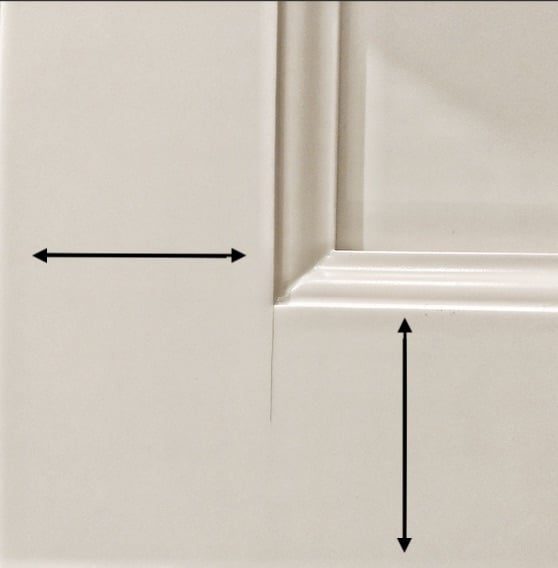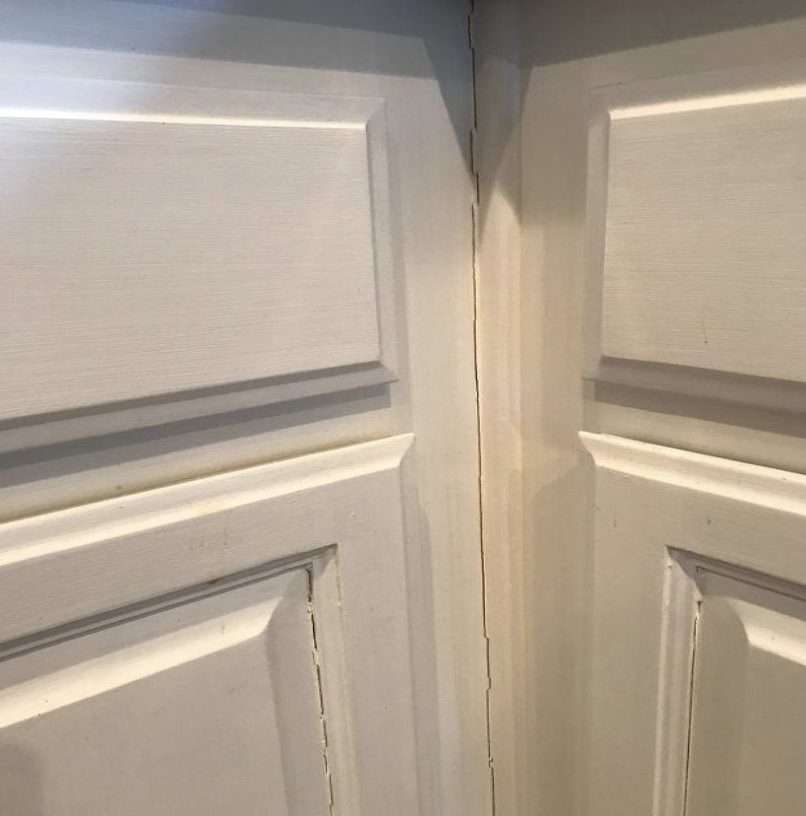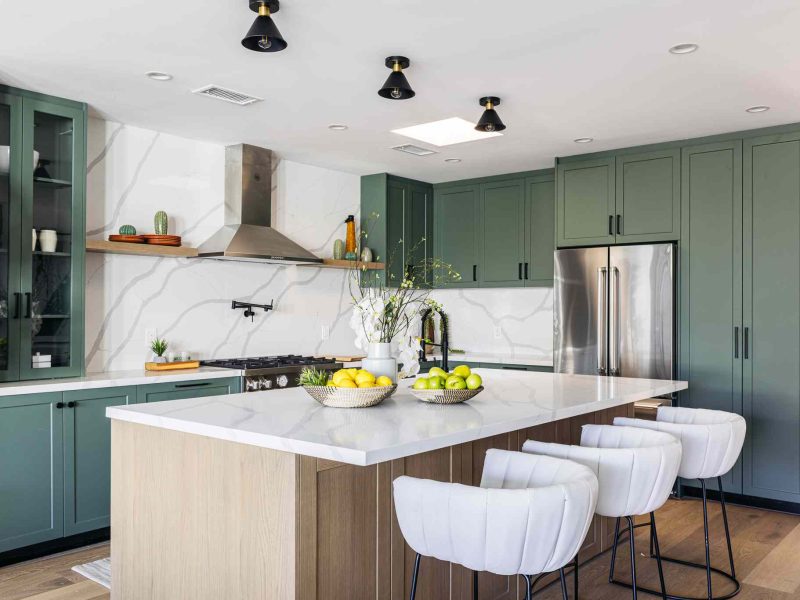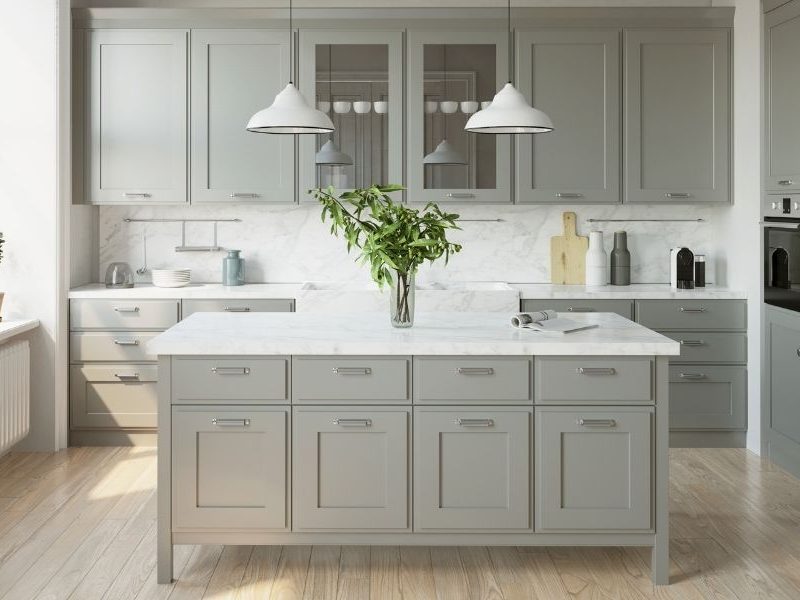Painting cabinets is a great way to give your kitchen or bathroom a new look without having to replace the entire cabinetry. However, one of the common concerns associated with painting cabinets is whether the paint will crack or chip over time. While this is certainly a possibility, there are steps you can take to ensure that your painted cabinets last for years to come. By taking the time to prepare your cabinets properly and using the right type of paint and topcoat, you can help prevent cracking and ensure your painted cabinets look great for years to come.
What Causes Painted Cabinets to Crack?
Painted cabinets present a unique set of challenges for homeowners, as they are prone to cracking if not cared for properly. So what causes painted cabinets to crack? The most common culprit is moisture and humidity. If your kitchen is particularly damp, or if the cabinets are regularly exposed to moisture, the paint will start to deteriorate, leading to cracks. Poor ventilation and extreme temperature changes can also cause cracking. Improper painting techniques, such as using too much paint or thinning the paint, can also cause cracking. Finally, using the wrong type of paint can also cause cracking. Latex-based paints are generally the best choice for painted cabinets, as they are more durable and long-lasting than other types of paint. To keep your painted cabinets in good condition, ensure that they are not exposed to moisture or extreme temperature changes and that the paint is applied correctly.
Types of Paint Used on Cabinets
When it comes to painting cabinets, selecting the right type of paint is essential in preventing cracks from occurring. Different types of paints may be used for cabinets depending on the desired finish. For instance, oil-based paints are more durable than water-based paints, making them ideal for cabinets that are prone to high levels of usage. On the other hand, water-based paints are easier to apply and dry faster, making them more suitable for cabinets used in areas with less wear and tear.
When selecting a paint type for cabinets, it is important to consider the cabinet’s material, the desired finish, and the level of usage that the cabinet will receive. For example, if the cabinet is made of wood, a latex-based paint is more suitable than an oil-based paint. Similarly, if a glossy finish is desired, an enamel-based paint is the most appropriate option.
Regardless of the type of paint used on cabinets, it is important to properly prepare the surface before applying the paint. This includes cleaning the surface, repairing any damages, sanding the wood, and priming the surface. Taking these steps can help ensure that the paint adheres to the surface and that the cabinet remains free of cracks.
Overall, understanding the different types of paint used on cabinets and following the necessary preparation steps can help prevent cracks from forming. Taking the time to properly select and apply the paint can ensure that the cabinets remain in good condition for years to come.
How to Properly Prepare Cabinets for Painting
Painting cabinets can be an effective way to update the look of your kitchen without investing in costly renovations. However if the cabinets are not properly prepared before painting, cracking may occur. To prevent this, there are some steps you can take to ensure that the cabinets are ready for painting.
To begin, make sure the cabinets are completely clean and free of any dirt or dust. Use a mild detergent and warm water to remove any grease or residue buildup. Then, use a piece of sandpaper to sand down any rough spots on the cabinets. This will help the paint adhere better to the cabinets.
Next, use painter’s tape to cover any areas that you don’t want painted. This includes hinges, door handles, and any other hardware. Once the cabinets are prepped, you can go ahead and apply a coat of primer. Primer is important as it helps the paint adhere better to the cabinets and also helps prevent cracking.
Once the primer is dry, it’s time to apply the paint. Again, use painter’s tape to cover any areas that you don’t want painted. For best results, use a brush or a roller to apply the paint. Make sure to use even strokes and paint in the same direction. After the first coat is applied, you can apply a second coat for a more durable finish.
By taking the time to properly prepare cabinets before painting, you can help prevent cracking. Doing so will ensure that your cabinets look great for years to come.
Best Practices for Painting Cabinets
Painting cabinets is a great way to spruce up your home or office and add a touch of personality and style. However, it’s important to know that painted cabinets are not invincible and can crack or chip over time. To help avoid this, it’s important to follow best practices for painting cabinets.
Preparing the surface is the most important step when painting cabinets. Remove any dirt, dust, or debris from the surface before beginning to paint. Sand the surface lightly to create a smooth surface for the paint to adhere to. After sanding, wipe the surface down with a damp cloth.
Choose a good quality paint and primer. Investing in quality paint and primer will help ensure a lasting finish. For best results, use a semi-gloss or gloss paint and a water-based primer. Consider using a sprayer to apply the paint for a smoother, more even finish.
After painting, allow the cabinets to dry completely before using them. Once dry, apply a coat of sealant to the cabinets for added protection. Choose a sealant designed specifically for painted cabinets, and apply it according to the manufacturer’s instructions.
Painting cabinets is a great way to update the look of your home or office. By following best practices for painting cabinets, you can help ensure that your painted cabinets will last for years to come.

How to Repair Cracks in Painted Cabinets
When it comes to painted cabinets, cracks are an unwanted but inevitable occurrence. Cracks in painted cabinets can be caused by a number of reasons, such as changes in temperature and humidity, age, and even everyday wear and tear. While it can be easy to become overwhelmed with the thought of repair, there are a few simple steps you can take to get your painted cabinets looking like new again.
The key to repairing cracks in painted cabinets is to take the time to properly prepare the surface and fill in the cracks with the correct material. First, sand the area around the crack to create a smooth surface, being sure to remove any loose paint or debris. Next, fill the crack with a quality filler that is suitable for use on painted surfaces. After the filler has dried, sand the area again to ensure a smooth finish. Finally, apply a fresh coat of paint to the entire cabinet.
Caring for your painted cabinets can make them last longer. Be sure to clean the cabinets regularly to prevent dirt and dust buildup, and use furniture polish to keep the surface in top condition. Additionally, check the cabinets periodically for any signs of cracking, and repair them as soon as possible. With a little bit of attention and care, you can keep your painted cabinets looking beautiful for many years.
Protecting Painted Cabinets to Prevent Cracking
Painting cabinets can be a great way to update the look of your kitchen or bathroom, but you want to make sure your efforts don’t end up wasted. Painted cabinets can crack if not properly cared for, so it’s essential to protect them and ensure their longevity.
Start by choosing the right paint. Make sure you’re using a durable paint that contains high-quality binders. The binders will help ensure that the paint adheres to the surface and is less likely to chip or crack. You can also use a primer to further protect your cabinets.
It’s also important to make sure you’re using the correct painting tools and techniques. Make sure to use a quality brush or roller to apply the paint, and use long strokes in the same direction to ensure a smooth finish. This will also help prevent chipping and cracking.
Finally, make sure to take proper care of your cabinets once they’re painted. Wipe them down regularly to prevent dirt and dust from building up, and use mild soap and water for more stubborn stains. Avoid using abrasive cleaners or rough sponges, as these can cause the paint to chip or crack.
By taking the right steps, you can help protect your painted cabinets and ensure they last for years to come. With the right paint, tools, and care, you can keep your cabinets looking beautiful and prevent any cracking from occurring.
Alternatives to Painting Cabinets
Painting cabinets can be an attractive and cost-effective way to update the look of your kitchen. However, if you paint your cabinets, you may worry about them cracking. Fortunately, there are a few alternatives to painting your cabinets that won’t leave you with this concern. One of the most popular alternatives is to reface your cabinets. Refacing involves changing the outside of your cabinets while leaving their framing in place. This could involve replacing the doors, drawer fronts, and even the hardware. Another option is to install new cabinets. This is a more expensive option, but it could be worth it depending on the condition of your existing cabinets. Both refacing and installing new cabinets can provide you with more customizability than painting them. Finally, you could also consider staining your cabinets. Staining offers a richer look than painting, and it seals the wood so that it won’t easily crack. Whichever option you choose, you can still create a beautiful and updated look for your kitchen without worrying about cabinets cracking due to paint.
Conclusion
Painted cabinets can crack over time, especially if they are not properly cared for or if the paint used is not of good quality. Painting cabinets can be a great way to update the look of your kitchen, but it is important to take the proper steps to ensure that your cabinets last as long as possible. Make sure to properly clean and sand your cabinets before applying paint, use the highest quality paint you can find, and be sure to give the cabinets a few coats of protective sealant to help them last longer.


